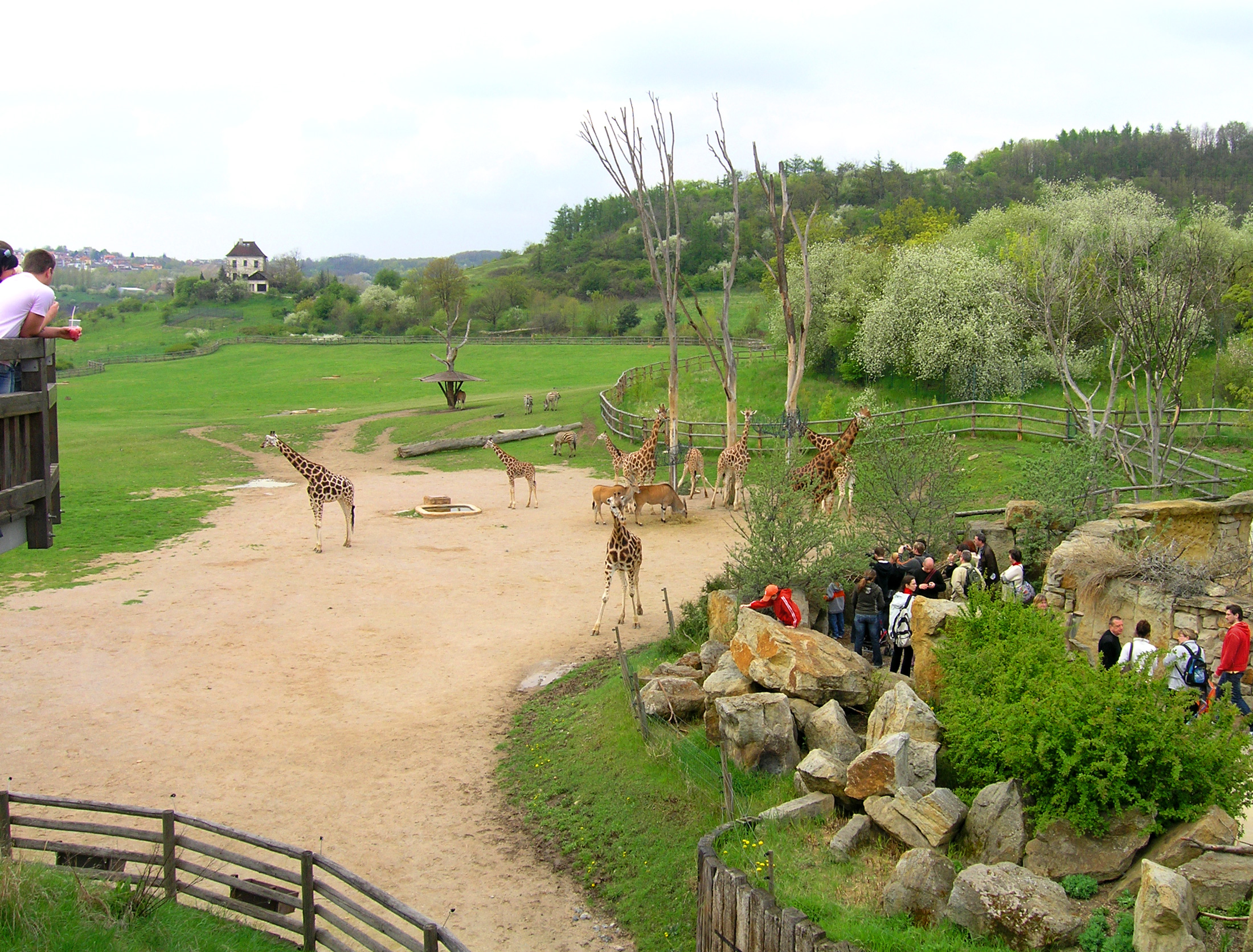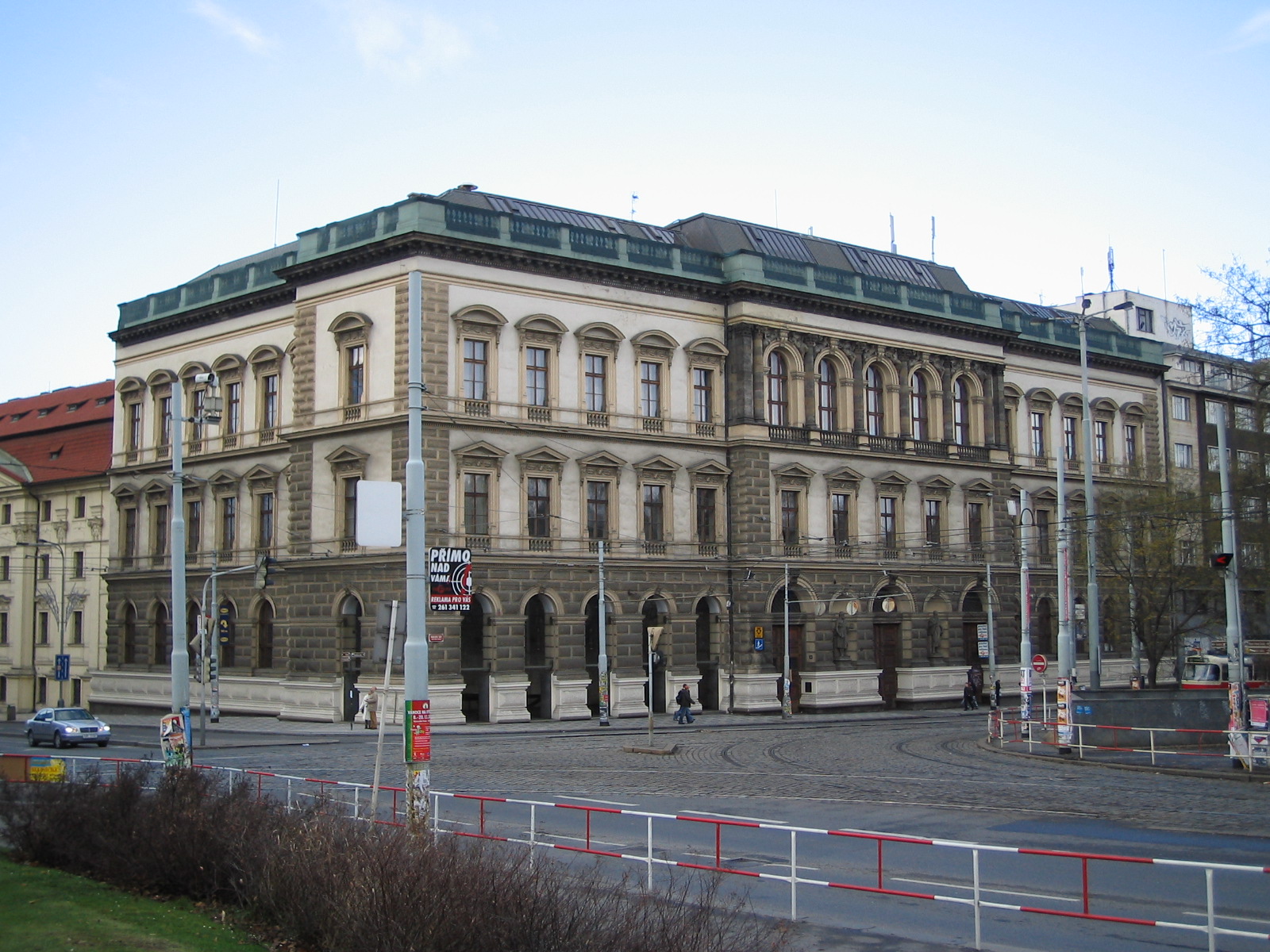|
Villa Lanna
Villa Lanna is a Neo-Renaissance landmark building located in a residential quarter of Bubeneč in Prague 6, Czech Republic. It is a property of the Academy of Sciences of the Czech Republic and is used for representative purposes such as scientific symposia, jubilee festivals and also as a hotel. Situation The villa is situated in a large garden in the Bubeneč district of west part of Prague. Its grounds are along the former main road used to reach Stromovka Park. History Villa Lanna was projected in 1868 and built until 1872 by Czech industrial entrepreneur and world-famous art collector Adalbert (Vojtěch) Lanna Junior (1836-1909) to be a summer residence for his family. It was designed probably by Vojtěch Ignác Ullmann in an early Neo-Renaissance style inspired by Italian Palladian models of ''villa suburbana'', designed at the same period by Gottfried Semper in Dresden. It belonges to the best examples of such villas in the Middle Europe. Villa is decorated with frescoes p ... [...More Info...] [...Related Items...] OR: [Wikipedia] [Google] [Baidu] |
Viktor Barvitius
Viktor Barvitius (March 28, 1834 – June 9, 1902) was a Czech painter, influenced primarily by Realism and late Impressionism. Life and work In 1864 he graduated from the Prague Academy. His graduate work was a picture of the Battle of Crecy. From 1865 to 1868 lived in Paris, where he studied under Thomas Couture. In 1860 he returned to Bohemia, then devoted himself to genre painting. He died in Prague, aged 68. His older brother was the architect Antonín Viktor Barvitius (1823–1901). @ Slavné Stavby Notable works include a portrait of Adolf Kosárek
Adolf Kosárek (6 January 1830, Herálec – 29 October 1859, Prague) was a Czech lan ...
[...More Info...] [...Related Items...] OR: [Wikipedia] [Google] [Baidu] |
Renaissance Revival Architecture In The Czech Republic
The Renaissance ( , ) , from , with the same meanings. is a period in European history marking the transition from the Middle Ages to modernity and covering the 15th and 16th centuries, characterized by an effort to revive and surpass ideas and achievements of classical antiquity. It occurred after the Crisis of the Late Middle Ages and was associated with great social change. In addition to the standard periodization, proponents of a "long Renaissance" may put its beginning in the 14th century and its end in the 17th century. The traditional view focuses more on the early modern aspects of the Renaissance and argues that it was a break from the past, but many historians today focus more on its medieval aspects and argue that it was an extension of the Middle Ages. However, the beginnings of the period – the early Renaissance of the 15th century and the Italian Proto-Renaissance from around 1250 or 1300 – overlap considerably with the Late Middle Ages, conventionall ... [...More Info...] [...Related Items...] OR: [Wikipedia] [Google] [Baidu] |
Buildings And Structures In Prague
A building, or edifice, is an enclosed structure with a roof and walls standing more or less permanently in one place, such as a house or factory (although there's also portable buildings). Buildings come in a variety of sizes, shapes, and functions, and have been adapted throughout history for a wide number of factors, from building materials available, to weather conditions, land prices, ground conditions, specific uses, prestige, and aesthetic reasons. To better understand the term ''building'' compare the list of nonbuilding structures. Buildings serve several societal needs – primarily as shelter from weather, security, living space, privacy, to store belongings, and to comfortably live and work. A building as a shelter represents a physical division of the human habitat (a place of comfort and safety) and the ''outside'' (a place that at times may be harsh and harmful). Ever since the first cave paintings, buildings have also become objects or canvasses of much artistic ... [...More Info...] [...Related Items...] OR: [Wikipedia] [Google] [Baidu] |
Troya Castle
{{disambiguation ...
Troya may refer to: * Troya (Asia Minor), the Turkish and Spanish translation for the city of Troy * Carlo Troya (1784–1858), Italian historian and politician * C.D. Troya, a Honduran football club See also * * Troja (other) * Troy (other) * Troyan (other) Troyan (Bulgarian: Троян) is a town in Bulgaria. Troyan may also refer to: Places *Troyan Municipality, in Lovech Province, Bulgaria * Troyan (village), in Simeonovgrad municipality, Haskovo Province, Bulgaria *Troyan Peak, in Antarctica * Tr ... [...More Info...] [...Related Items...] OR: [Wikipedia] [Google] [Baidu] |
Prague Zoo
Prague Zoological Garden (Czech: ''Zoologická zahrada hl. m. Prahy'') is a zoo in Prague, Czech Republic. It was opened in 1931 with the goal to "advance the study of zoology, protect wildlife, and educate the public" in the district of Troja in the north of Prague. In 2013, the zoo occupied with in use for exhibits, and housed around 5,000 animals from just 676 species, including 132 species listed as threatened. The zoo is rated as the seventh best zoo in the world by Forbes Travel Guide in 2007, and is rated as the fifth best in the world by TripAdvisor. The zoo has contributed significantly to saving Przewalski's horse; for many years, it was the leading breeder of the subspecies. The zoo director is Miroslav Bobek. History The idea for a zoological garden in Prague was first proposed in 1881 in a newspaper article by Count Sweerts-Spork, on the occasion of the marriage of Crown Prince Rudolf of Austria and Princess Stéphanie of Belgium. In 1919, at a meeting of the a ... [...More Info...] [...Related Items...] OR: [Wikipedia] [Google] [Baidu] |
Hans Makart
Hans Makart (28 May 1840 – 3 October 1884) was a 19th-century Austrian academic history painter, designer, and decorator. Makart was a prolific painter whose ideas significantly influenced the development of visual art in Austria-Hungary, Germany, and beyond. Life Makart was the son of a chamberlain at the Mirabell Palace, born in the former residence of the prince-archbishops of Salzburg, the city in which Mozart had been born. Initially, he received his training in painting at the Vienna Academy between 1850 and 1851 from Johann Fischbach. While in the Academy, German art was under the rule of a classicism, which was entirely intellectual and academic—clear and precise drawing, sculpturesque modelling, and pictorial erudition were esteemed above all. Makart, who was a poor draughtsman, but who had a passionate and sensual love of color, was impatient to escape the routine of art school drawing. For his fortune, he was found by his instructors to be devoid of all talent and ... [...More Info...] [...Related Items...] OR: [Wikipedia] [Google] [Baidu] |
Josef Mánes
Josef Mánes (12 May 1820, Prague – 9 December 1871, Prague) was a Czech painter. Life He came from a family of painters, which included his father Antonín, his uncle and Director of the Prague Art Academy Václav, his brother Quido and his sister Amalie. His first painting lessons naturally came from his father. From 1835 to 1844, he studied at the Academy of Fine Arts, Prague, under Professors František Tkadlík and Christian Ruben. He continued his studies in Munich for two years. Upon his return, an affair with the family's maid had unpleasant results and created an estrangement with some members of his family that left him in a state of severe depression. He found refuge in the patronage of Count Bedřich Silva-Tarouca , living and working at his castle in Průhonice for twenty years. From there, he made many trips throughout Moravia, Upper Hungary (Slovakia) and Poland. He took an active role in many artistic, literary and patriotic societies. He also participate ... [...More Info...] [...Related Items...] OR: [Wikipedia] [Google] [Baidu] |
Gottfried Semper
Gottfried Semper (; 29 November 1803 – 15 May 1879) was a German architect, art critic, and professor of architecture who designed and built the Semper Opera House in Dresden between 1838 and 1841. In 1849 he took part in the May Uprising in Dresden and was put on the government's wanted list. He fled first to Zürich and later to London. He returned to Germany after the 1862 amnesty granted to the revolutionaries. Semper wrote extensively on the origins of architecture, especially in his book '' The Four Elements of Architecture'' (1851), and was one of the major figures in the controversy surrounding the polychrome architectural style of ancient Greece. He designed works at all scales—from major urban interventions such as the redesign of the Ringstraße in Vienna, to a baton for Richard Wagner. His unrealised design for an opera house in Munich was, without permission, adapted by Wagner for the Bayreuth Festspielhaus. Life Early life (to 1834) Semper was born into ... [...More Info...] [...Related Items...] OR: [Wikipedia] [Google] [Baidu] |
Neo-Renaissance
Renaissance Revival architecture (sometimes referred to as "Neo-Renaissance") is a group of 19th century architectural revival styles which were neither Greek Revival nor Gothic Revival but which instead drew inspiration from a wide range of classicizing Italian modes. Under the broad designation Renaissance architecture nineteenth-century architects and critics went beyond the architectural style which began in Florence and Central Italy in the early 15th century as an expression of Renaissance humanism; they also included styles that can be identified as Mannerist or Baroque. Self-applied style designations were rife in the mid- and later nineteenth century: "Neo-Renaissance" might be applied by contemporaries to structures that others called "Italianate", or when many French Baroque features are present (Second Empire). The divergent forms of Renaissance architecture in different parts of Europe, particularly in France and Italy, has added to the difficulty of defining an ... [...More Info...] [...Related Items...] OR: [Wikipedia] [Google] [Baidu] |
Andrea Palladio
Andrea Palladio ( ; ; 30 November 1508 – 19 August 1580) was an Italian Renaissance architect active in the Venetian Republic. Palladio, influenced by Roman and Greek architecture, primarily Vitruvius, is widely considered to be one of the most influential individuals in the history of architecture. While he designed churches and palaces, he was best known for country houses and villas. His teachings, summarized in the architectural treatise, ''The Four Books of Architecture'', gained him wide recognition. The city of Vicenza, with its 23 buildings designed by Palladio, and 24 Palladian villas of the Veneto are listed by UNESCO as part of a World Heritage Site named City of Vicenza and the Palladian Villas of the Veneto. The churches of Palladio are to be found within the "Venice and its Lagoon" UNESCO World Heritage Site. Biography and major works Palladio was born on 30 November 1508 in Padua and was given the name Andrea di Pietro della Gondola. His father, Pietro, ... [...More Info...] [...Related Items...] OR: [Wikipedia] [Google] [Baidu] |
Vojtěch Ignác Ullmann
Vojtěch Ignác Ullmann (23 April 1822 in Prague – 17 September 1897 in Příbram) was a Czech architect working in Revivalism architecture, particularly Renaissance Revival architecture. Life Ullmann studied architecture at the Academy of Fine Arts in Vienna with professors August Sicard von Sicardsburg and Eduard van der Nüll. After finishing his studies, he travelled to Italy. From 1854 he worked as an architect in Prague. He often collaborated with the architect Antonín Viktor Barvitius, whose sister he married in 1856. By 1874 he had designed a number of buildings in Prague. Design style In Ullmann's early work we see echoes of medieval stylistic elements (see the Church of Saints Cyril and Methodius in Prague 8 - Karlín). In the next phase of his work, he was significantly influenced by the Viennese renaissance school. Work Prague * Church of Saints Cyril and Methodius (Karlín), Karlínské Square. Prague 8 * Czech Polytechnic, Karlovo Square 13, Prague 1, (to ... [...More Info...] [...Related Items...] OR: [Wikipedia] [Google] [Baidu] |








